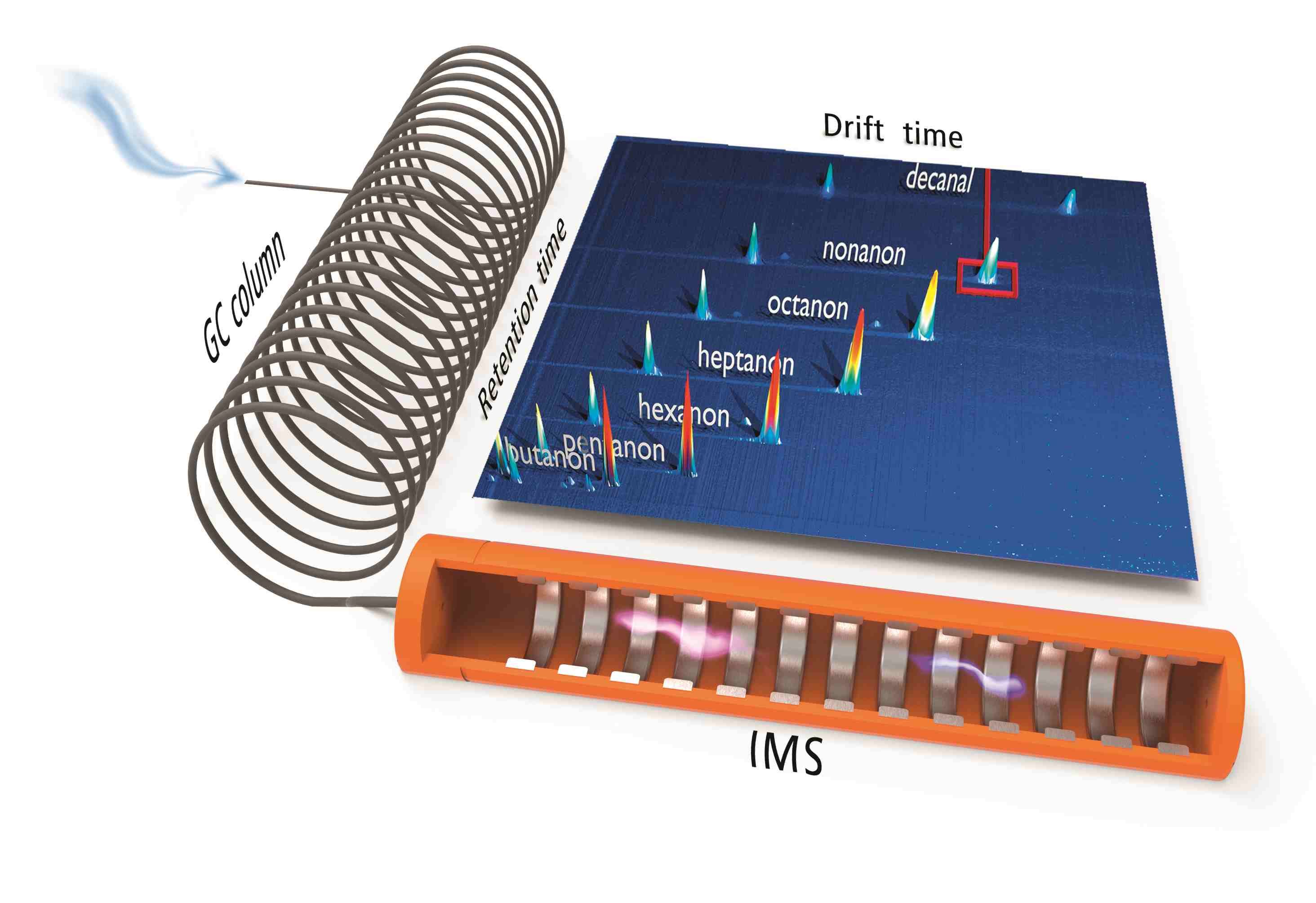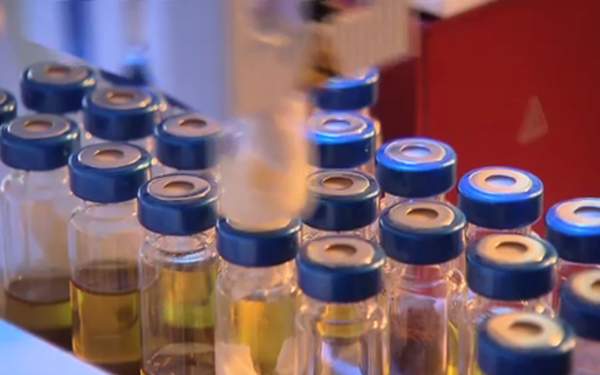Gas Chromatography (GC) coupled to Ion Mobility Spectrometry (IMS)
Complex analyte mixtures like for example food, flavours, natural gas and environmental applications often demand a second and independent separation step in order to seperately analyse the multiplicity of compounds at lowest (ppb) concentration levels.
To overcome the limitation of IMS with regard to separation efficiency G.A.S. equips almost all of its IMS systems with gas chromatographic (GC) columns. The volatile compounds of samples under investigation are pre-separated in time by a GC column. The discrete compounds elute directly into the IMS ionization chamber, so that analyte and/or ion interactions and a competition of analytes on the reactand ions can be avoided. By that the GC-IMS set-up enables a twofold separation of analyte mixtures and the detection by the IMS‘ electrometer. The separation of compounds based on their retention indices (RI) both offers information for identification (using the NIST Kovats RI-data base) and suppresses undesired compound interactions during ionization and detection in the IMS. This configuration enhances the selectivity of the detector towards individual compounds.
Since the IMS measurements are extremely fast (up to 21ms/ spectrum) a continuous and high-resolution recording of analyte signals is provided. Shown figure sketches the GC-IMS sample flow and detection leading to a 3D-dataset of GC- and IMS separation, same as the corresponding intensity which are processed using G.A.S. VOCal and additional software tools.
In order to optimize the analytical performance if its Time-OF-Flight IMS further G.A.S. recently developed a special ionisation architecture that enhances the compound feed time resolution shaping a downsized, ‘virtual’ void volume controlled by a more effective sample- and drift gas flow inside the ionization area. This FOCUS-IMS® set-up (patent pending) leads to a correlation between Signal peak shape and Electronic Pressure Controller (EPC) applied flow rates. Peak symmetry and Full Width at Half Maximum (FWHM) become comparable to state-of-the-art Mass Spectrometers.
The ratio of carrier- and drift gas controls the size and dwell time of the sample in the ionization sphere and by that becomes a tuneable parameter by the operator to optimize sensitivity and flush out characteristics acc. to the application requirements. As a consequence, an elevated drift gas flow lowers the sensitivity throughout the whole concentration range and leads to the effect that the linear range of the FOCUS-IMS® can be increased significantly compared to classical IMS designs (see Technical Note).

 Deutsch
Deutsch English
English Chinese
Chinese


